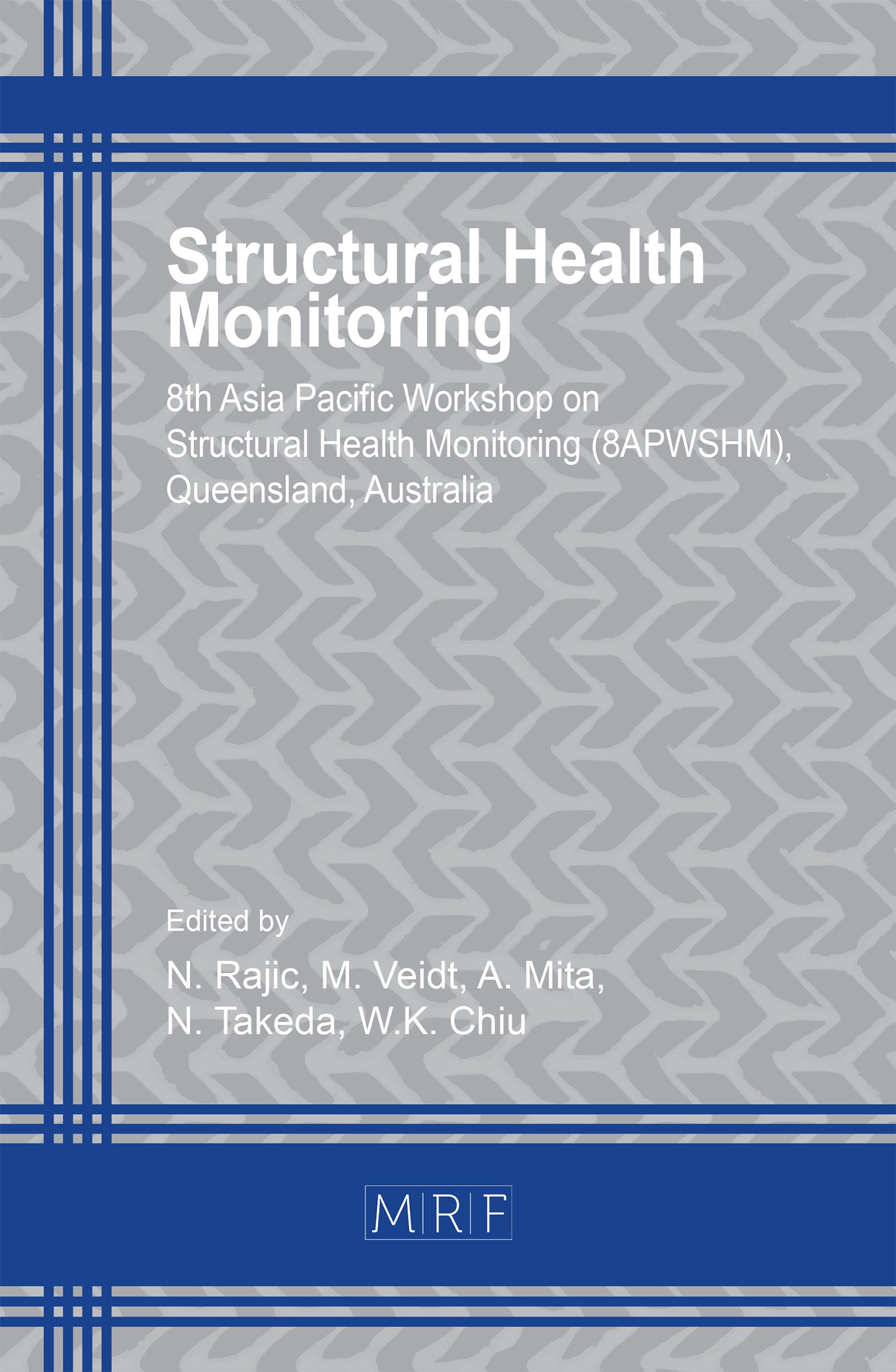Damage Identification of High-speed Maglev Guideway Girder Based on Modal Identification
XiangYun Kong, JingYu Huang, XiaoNong Wang, ShuoWei Wang, Liang Zhao, ZhiHong Fang
download PDFAbstract. As a modern high-tech rail vehicle, the maglev train realizes the non-contact suspension and guidance between the train and the guideway, which greatly reduces the resistance of the system. Due to the high-speed operation characteristics of maglev trains, the structural health monitoring of guideway girders is particularly important for the safety and stability of maglev train operation. This paper takes the maglev train guideway girder as the monitoring target, and the finite element model of the maglev vehicle-guideway is established to simulate the running state of the train passing through the guideway girder. The dynamic response data of the guideway girder is obtained in the finite element model, considering healthy states and different damage states of the guideway girder. Then, a modal-based damage identification method is proposed, which obtains the guideway girder damage sensitive characteristics by decomposing the guideway girder acceleration response signal. Finally, based on the measured guideway girder acceleration data, this paper verifies the effectiveness of the damage identification method in guideway girder structure health monitoring, which provides reference and guidance for the future maintenance of the maglev guideway girder.
Keywords
High-Speed Maglev, Modal Identification, Guideway Girder, Dynamic Response, Damage Identification
Published online 2/20/2021, 9 pages
Copyright © 2021 by the author(s)
Published under license by Materials Research Forum LLC., Millersville PA, USA
Citation: XiangYun Kong, JingYu Huang, XiaoNong Wang, ShuoWei Wang, Liang Zhao, ZhiHong Fang, Damage Identification of High-speed Maglev Guideway Girder Based on Modal Identification, Materials Research Proceedings, Vol. 18, pp 278-286, 2021
DOI: https://doi.org/10.21741/9781644901311-34
The article was published as article 34 of the book Structural Health Monitoring
![]() Content from this work may be used under the terms of the Creative Commons Attribution 3.0 licence. Any further distribution of this work must maintain attribution to the author(s) and the title of the work, journal citation and DOI.
Content from this work may be used under the terms of the Creative Commons Attribution 3.0 licence. Any further distribution of this work must maintain attribution to the author(s) and the title of the work, journal citation and DOI.
References
[1] Entezami A, Sarmadi H, Behkamal B, et al. Big Data Analytics and Structural Health Monitoring: A Statistical Pattern Recognition-Based Approach[J]. Sensors, 2020, 20(8):2328. https://doi.org/10.3390/s20082328
[2] Yang J, Sha G, Zhou Y, et al. Statistical pattern recognition for structural health monitoring using ESN feature extraction method[J]. 2018. https://doi.org/10.2316/Journal.206.2018.6.206-4686
[3] Wang Q A, Ni Y Q. Measurement and Forecasting of High-Speed Rail Track Slab Deformation under Uncertain SHM Data Using Variational Heteroscedastic Gaussian Process[J]. Sensors, 2019, 19(15):3311. https://doi.org/10.3390/s19153311
[4] Liu X Z , Xu C, Ni Y Q. Wayside Detection of Wheel Minor Defects in High-Speed Trains by a Bayesian Blind Source Separation Method[J]. Sensors, 2019, 19(18):3981-. https://doi.org/10.3390/s19183981
[5] W.J. Staszewski, Identification of dampingin m.d.o.f systems usingtime-scale decomposition, Journal of Sound and Vibration. 1997(203). 283–305. https://doi.org/10.1006/jsvi.1996.0864
[6] M. Ruzzene, A. Fasana, L. Garibaldi, B. Piombo, Natural frequencies and dampings identification using wavelet transform: application to real data. Mechanical Systems and Signal Processing. 1997(2). 207-218. https://doi.org/10.1006/mssp.1996.0078
[7] P. Argoul, T. P. Le, Wavelet analysis of transient signals in civil engineering, Novel Approaches in Civil Engineering, Lecture Notes in Applied and Computational Mechanics, 2003(14), 200-213
[8] B. Boashash, P. O. Shea, Ploynormial Wigner-Ville distributions and their relationship to time-varying higher order spectra. IEEE trans. Signal Process. 1995(43): 216-220. https://doi.org/10.1109/78.258143
[9] B. Eschdi’e, B. Tor’esanni, Wavelet representation and time-scaled matched receiver for asymptotic signals. Proc. EUSIPCOV, Barcelona, 1990,305-308
[10] B.A.D. Piombo, A. Fasana, S. Marchesiello, et al. Modeling and identification of the dynamic response of a supported bridge. Mechanical Systems and Signal Processing, 2000,14(1): 75-89. https://doi.org/10.1006/mssp.1999.1266
[11] R.W.Baker, M.J.Hinich, Statistical monitoring of rotating machinery by cumulant spectral analysis. IEEE signal Processing workshop on Hinger-Order Statistic. 1993:187-191
[12] B.Boashash , Estimating the Instantaneous Frequency of a signal Part 1: Fundamentals. Proceedings of the IEEE, 1992,80(4), 520-538. https://doi.org/10.1109/5.135376
[13] W.J.Staszewski, Copper J.E. Flutter data analysis using the wavelet transform. Proceedings of the International Seminar on New Advances in Modal Synthesis of Large Structures: Nonlinear, Damped and Non-deterministic Cases, Lyon, France, 1995, 203-214
[14] Y.G.Wang,J.H.Zhang,The application of wavelet transform in dynamic system identification,Structure & Environment Engineering1997(4) :22-29.
[15] I.Simonovski, M.Boltezar, The norms and variances of the Gabor, Morlet and General harmonic wavelet functions. Journal of Sound and Vibration. 2003(264): 545-557. https://doi.org/10.1016/S0022-460X(02)01206-3































